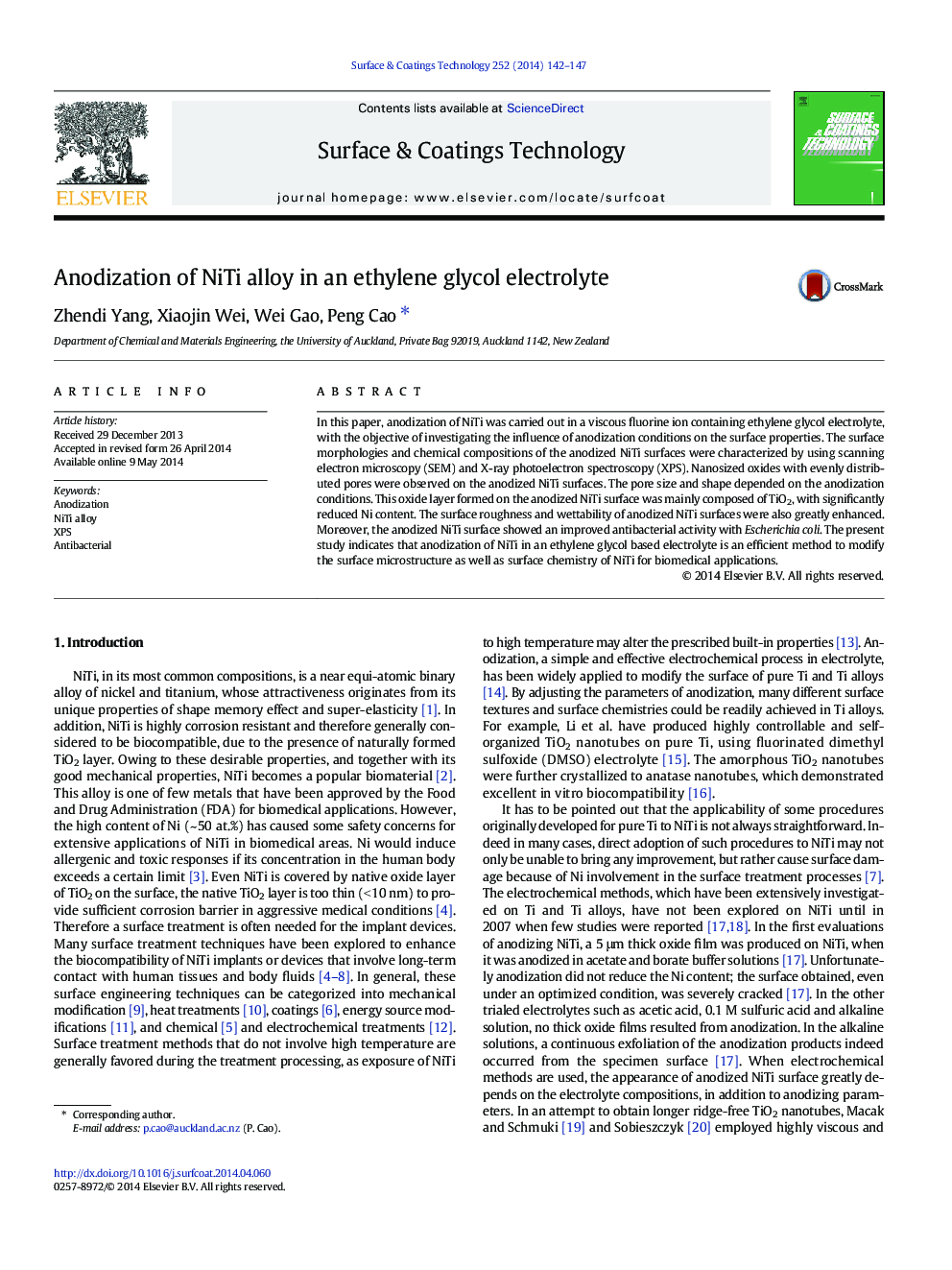| Article ID | Journal | Published Year | Pages | File Type |
|---|---|---|---|---|
| 1657489 | Surface and Coatings Technology | 2014 | 6 Pages |
•NiTi was anodized in fluorine ion containing ethylene glycol electrolyte.•The influence of anodization voltage and duration time was studied.•Rough and porous oxide layers were produced with reduced Ni content and enhanced surface wettability.
In this paper, anodization of NiTi was carried out in a viscous fluorine ion containing ethylene glycol electrolyte, with the objective of investigating the influence of anodization conditions on the surface properties. The surface morphologies and chemical compositions of the anodized NiTi surfaces were characterized by using scanning electron microscopy (SEM) and X-ray photoelectron spectroscopy (XPS). Nanosized oxides with evenly distributed pores were observed on the anodized NiTi surfaces. The pore size and shape depended on the anodization conditions. This oxide layer formed on the anodized NiTi surface was mainly composed of TiO2, with significantly reduced Ni content. The surface roughness and wettability of anodized NiTi surfaces were also greatly enhanced. Moreover, the anodized NiTi surface showed an improved antibacterial activity with Escherichia coli. The present study indicates that anodization of NiTi in an ethylene glycol based electrolyte is an efficient method to modify the surface microstructure as well as surface chemistry of NiTi for biomedical applications.
